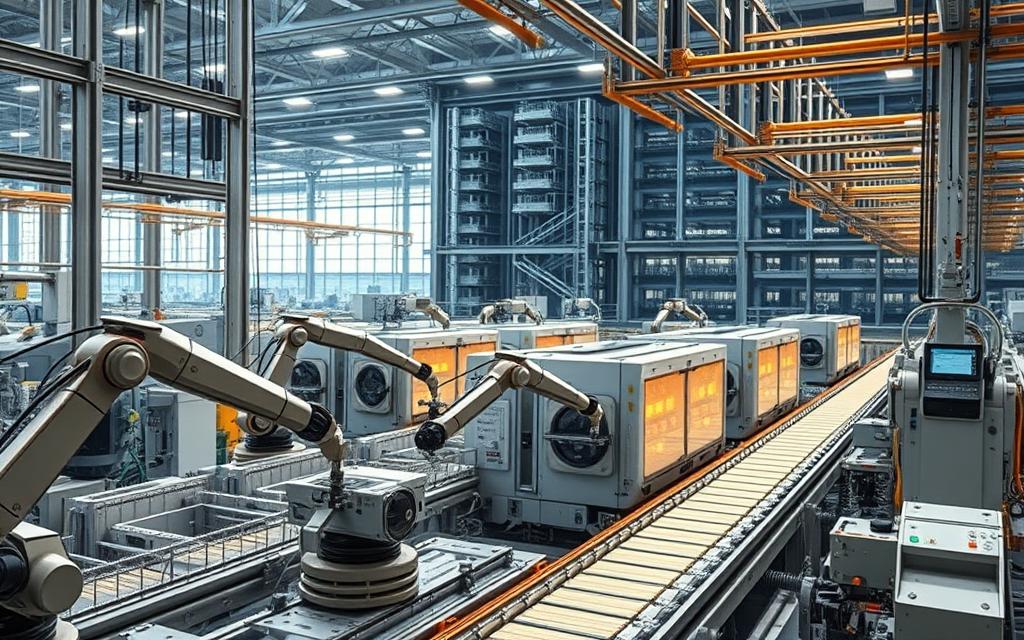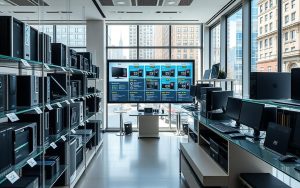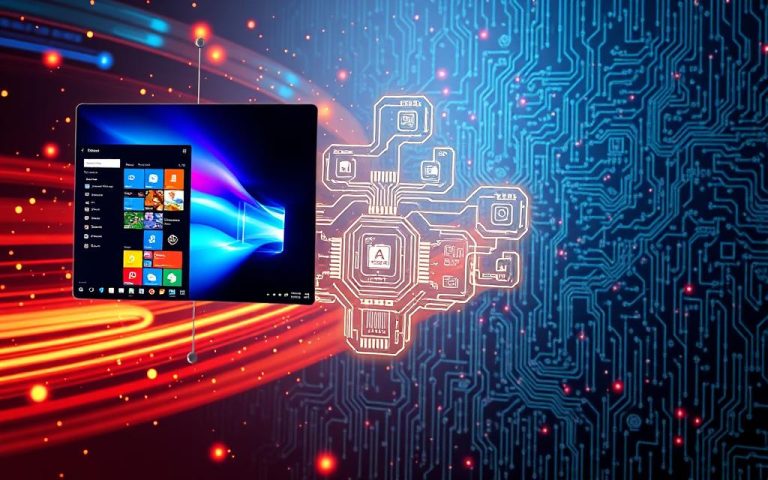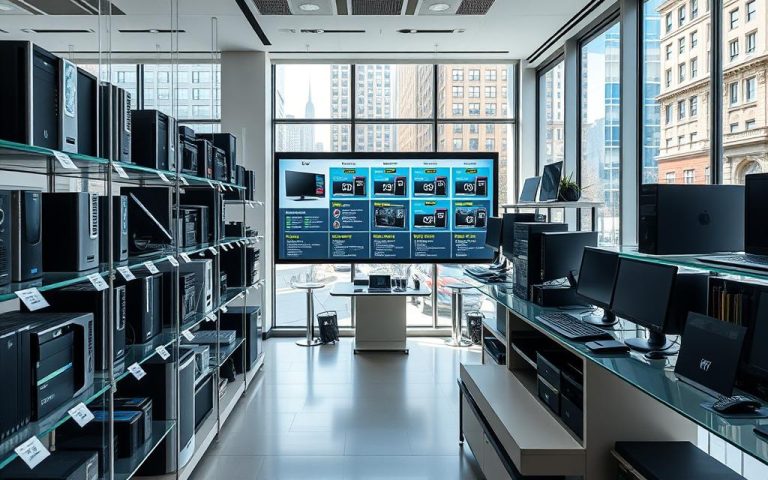Computer Integrated Manufacturing: How Automation Transforms Production
Computer integrated manufacturing (CIM) is revolutionising industrial production. It uses advanced tech to streamline manufacturing workflows. This system helps businesses achieve unmatched efficiency levels12.
Automation in manufacturing is crucial for gaining a competitive edge. CIM systems reduce labour costs and human error. These systems can boost production efficiency by 50% and cut operational expenses1.
CIM’s strength lies in connecting production stages through advanced technological integration. Flexible automation tech helps manufacturers adapt quickly to market changes. This can increase adaptability by up to 40%1.
The CIM revolution is gaining momentum across industrial sectors. About 60% of manufacturing companies are expected to adopt automation by 2025. Many firms report efficiency improvements of up to 30% through CIM2.
What is Computer Integrated Manufacturing System?
Computer Integrated Manufacturing (CIM) is a sophisticated production approach. It connects various tech components to create an intelligent manufacturing ecosystem. Computer integrated manufacturing strategies are revolutionising industrial processes across multiple sectors3.
Modern CIM systems transform traditional manufacturing workflows. They incorporate critical technologies to achieve this transformation.
The core components include:
- Computer-Aided Design (CAD)
- Computer-Aided Manufacturing (CAM)
- Robotics and automation systems
- Manufacturing Execution Systems (MES)
- Enterprise Resource Planning (ERP) platforms
Core Components and Technologies
CIM system components use advanced tech to create a unified production environment. Robotics in manufacturing automates complex tasks with unmatched precision and efficiency4.
CAD/CAM systems enable seamless design-to-production workflows. This reduces design costs and speeds up product development5.
Key Features of CIM Systems
CIM systems boost productivity, enhance quality control, and reduce operational inefficiencies. Companies using CIM solutions can see remarkable performance improvements.
| Performance Metric | Improvement Range |
|---|---|
| Production Productivity | 40-70% |
| Design Cost Reduction | 15-30% |
| Lead Time Reduction | 20-60% |
| Work-in-Process Inventory Cut | 30-60% |
Integration with Enterprise Systems
Modern CIM architectures extend beyond manufacturing floors. They integrate seamlessly with broader enterprise management platforms. This approach enables real-time data exchange and predictive maintenance4.
CIM represents a transformative technology that bridges design, production, and management into a unified, intelligent system.
The Evolution of Manufacturing Automation
Manufacturing automation has transformed industry through technological innovation. Since 1970, firms have increasingly used computers for design and production. CAD/CAM technology marked a pivotal moment in industrial development6.
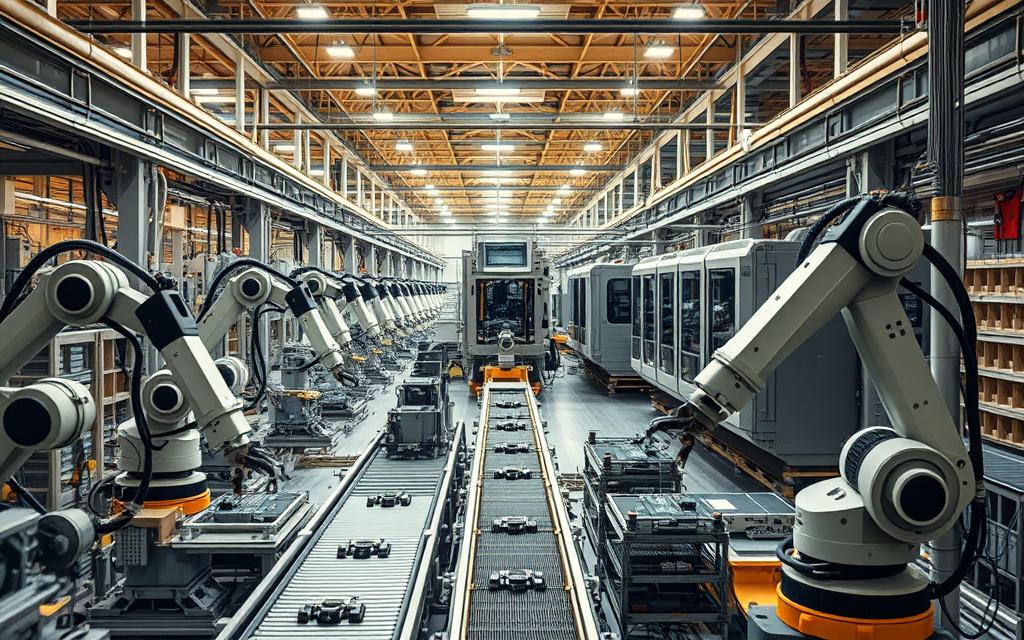
- Early mechanical automation
- Introduction of computer-controlled systems
- Development of integrated manufacturing technologies
- Emergence of Industry 4.0 principles
Computer integrated manufacturing (CIM) applies technology across all operational and information-processing functions6. These systems have transformed production processes, enabling near-perfect precision and efficiency4.
Modern technologies like AI and IoT drive unprecedented levels of integration. Fully automated systems can now operate continuously, reducing costs and minimising errors4.
Since 1993, manufacturing automation has been a focused endeavour. This shows the industry’s long-term commitment to technological advancement7.
As we move towards Industry 4.0, digital technologies will shape the future of manufacturing. The integration of these systems remains crucial for continued progress and innovation.
Benefits and Applications of CIM
Computer Integrated Manufacturing (CIM) revolutionises modern production processes. It offers significant advantages for manufacturers across various industries. CIM integrates advanced technologies to achieve unparalleled production efficiency and operational excellence.
https://www.youtube.com/watch?v=6iHQ_-yVHWw
Enhanced Production Efficiency
CIM boosts manufacturing productivity through sophisticated automation technologies. Businesses can see efficiency gains with production operations potentially increasing by 40-70 times8.
Integrated systems enable swift data collection and automated workflows. They also provide intelligent process management9.
- Automated data collection replacing manual recording
- Live quality checks using advanced sensor technologies
- Intelligent workflow optimization
Quality Control and Consistency
Quality management is a crucial advantage of CIM. Manufacturers can achieve substantial improvements in product quality. Potential yield increases of 2-5 times previous levels are possible8.
High-speed cameras and integrated sensors enable precise defect detection. They also ensure consistent production standards9.
Cost Reduction and Resource Optimization
CIM delivers significant economic benefits by streamlining operations. Companies can expect potential personnel cost reductions of 5-20%8. Work-in-process inventories might decrease by 30-60%.
This creates leaner, more efficient manufacturing environments10.
The integration of Computer Integrated Manufacturing transforms traditional production paradigms, delivering measurable improvements across operational performance metrics.
CIM technologies unlock unprecedented levels of production efficiency and quality control. They boost strategic competitiveness in the complex global marketplace.
Role of Advanced Technologies in CIM
Manufacturing is evolving rapidly with cutting-edge technologies reshaping Computer Integrated Manufacturing (CIM). AI has become a key driver, boosting efficiency and precision in manufacturing processes. Machine learning enables more intelligent and adaptive production systems in CIM.
Key advanced technologies revolutionising CIM include:
- Artificial Intelligence (AI) for predictive maintenance
- IoT in production for real-time monitoring
- Advanced robotics and automation
- Machine learning algorithms for process optimisation
These technologies have a significant impact on manufacturing. Companies using IoT can increase operational flexibility by 35%. This allows them to adapt quickly to market changes.
AI-powered predictive maintenance can cut operational costs by up to 50%. This shows the potential for substantial savings in the industry.
| Technology | Impact on Manufacturing | Efficiency Gain |
|---|---|---|
| AI | Predictive Maintenance | Up to 50% Cost Reduction |
| IoT | Real-time Monitoring | 35% Operational Flexibility |
| Robotics | Precision Manufacturing | Minimised Human Error |
The future of manufacturing lies in seamlessly integrating these advanced technologies. Siemens, Autodesk, and Dassault Systèmes are leading the charge in these technological innovations4.
Conclusion
Computer Integrated Manufacturing (CIM) leads the charge in technological transformation. It’s revolutionising production methods, shifting from traditional to sophisticated automated systems. CIM’s potential to boost efficiency, cut costs, and drive strategic decisions is truly remarkable1112.
CIM’s future aligns with Industry 5.0, promoting harmony between human creativity and intelligent systems. Manufacturers now see advanced tech as a tool to enhance human skills, not replace them. This approach combines AI-driven insights with unique problem-solving abilities1113.
Implementing CIM strategically remains vital for businesses seeking a competitive edge. By embracing innovation, companies can streamline processes and improve quality control. They can also respond swiftly to market changes12.
CIM’s evolution promises more than just technological progress. It’s reshaping how we approach manufacturing in the 21st century. This shift is fundamental and far-reaching11.
FAQ
What is Computer Integrated Manufacturing (CIM)?
How does CIM improve manufacturing efficiency?
What are the key technologies in a CIM system?
How does CIM impact product quality?
What industries benefit most from CIM?
What are the primary challenges in implementing CIM?
How does CIM relate to Industry 4.0 and 5.0?
What future technologies are expected to enhance CIM?
Source Links
- https://www.highgear.com/blog/benefits-challenges-work-automation-manufacturing-industry/
- https://esdst.eu/robotics-and-computer-integrated-manufacturing-transforming-industries/
- https://en.wikipedia.org/wiki/Computer-integrated_manufacturing
- https://www.n-ix.com/computer-integrated-manufacturing-use-cases/
- https://www.encyclopedia.com/management/encyclopedias-almanacs-transcripts-and-maps/computer-integrated-manufacturing
- https://www.britannica.com/technology/automation/Computer-integrated-manufacturing
- http://link.springer.com/10.1007/978-3-662-53120-4_6676
- https://www.ijltemas.in/DigitalLibrary/Vol.9Issue3/01-08.pdf
- https://www.nukon.com/blog/5-key-benefits-of-computer-integrated-manufacturing
- https://www.amscontrols.com/wp-content/uploads/2015/06/Benefits_of_CIM.pdf
- https://www.ariat-tech.com/blog/the-ultimate-guide-to-computer-integrated-manufacturing-systems(cims).html?srsltid=AfmBOopOh47Y4tv3juo2mDvT-YvXQ5fN2uCfv7eZYZnWS5oThM7cld09
- https://knkit.sg/what-is-computer-integrated-manufacturing/
- https://www.armagard.com/ip54/computer-integrated-manufacturing-explained-clearly.html

